
Witham viking seax

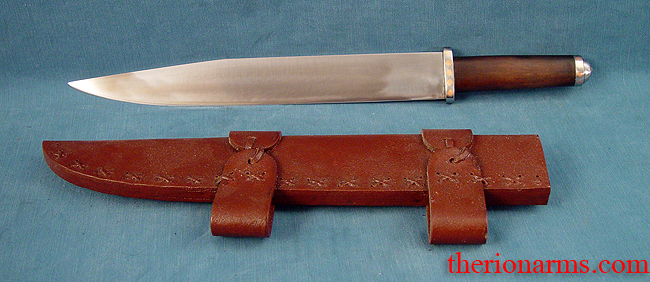

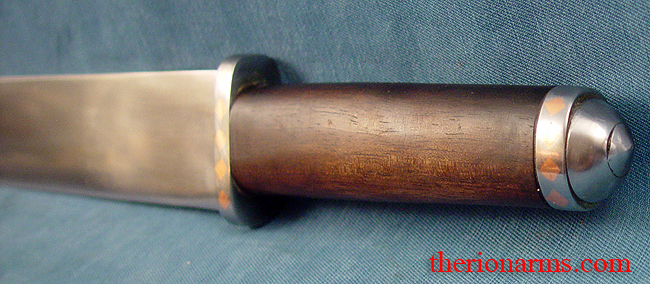
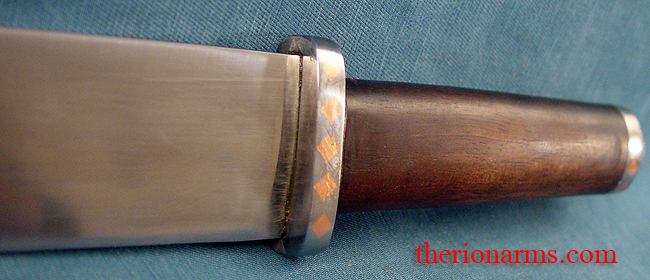
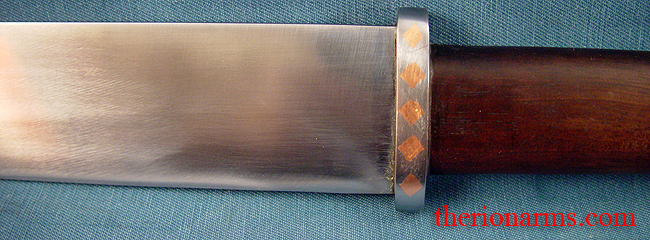

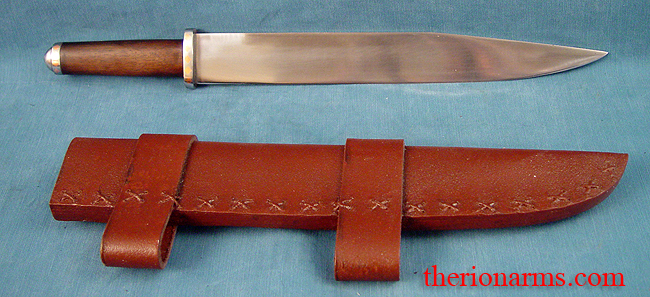
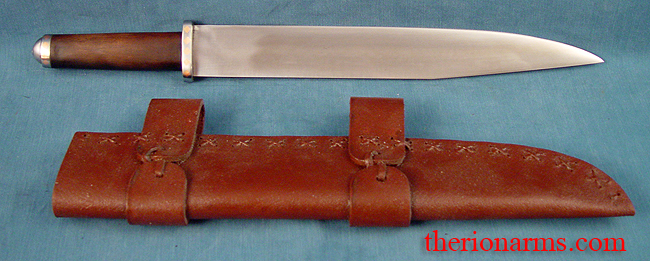
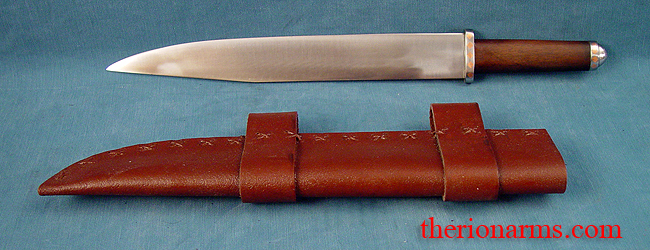
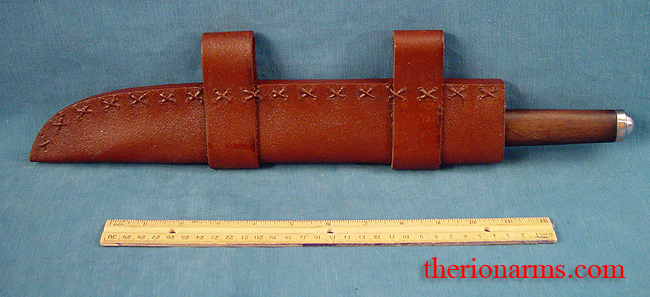

The seax (also known as/spelled scramseax, scramsax, scramseaxe, scramaseax, scramasax, or scramaseaxe, often referred to as a scram, seax, saxe, or sax (there, that should take care of the search engines)) was a Germanic single-edged knife. Seax were a daily wear knife, used both as a tool and for warfare. They range in size from 3" to 30". The larger ones (langseax) were primarily weapons, the smaller ones were tools, and intermediate sized ones served as dual purpose. The seax was worn in a horizontal sheath at the front of the belt, and the ownership/wearing of them may have been the sign of a free man. The Saxons may have derived their name from the seax knife in much the same way that the Franks were named for the francisca axe. This claim is largely supported by the appearance of seaxes in early Saxon heraldry.
This version, made by Legacy Arms, is based off a 10th century example and is a stylistic match to the River Witham viking sword, as the pommel and cross guard are steel inlaid with copper diamonds. The blade is 5160 high carbon steel sharpened on the curved edge and firmly peened through the leather-wrapped wood grip. The hand stiched leather scabbard with belt hanger straps is included. (Seax are meant to be worn hanging from the belt, sharp edge up).
length: 16 3/4"
blade: 12"
blade width: 1 1/2" at guard
blade width: 7/8" at 2" from tip
grip and pommel: 4 1/2"
guard: 1 3/16"
weight (knife): 14.4 oz
weight (knife and sheath): 1 lb 4.2 oz

Price: $155

